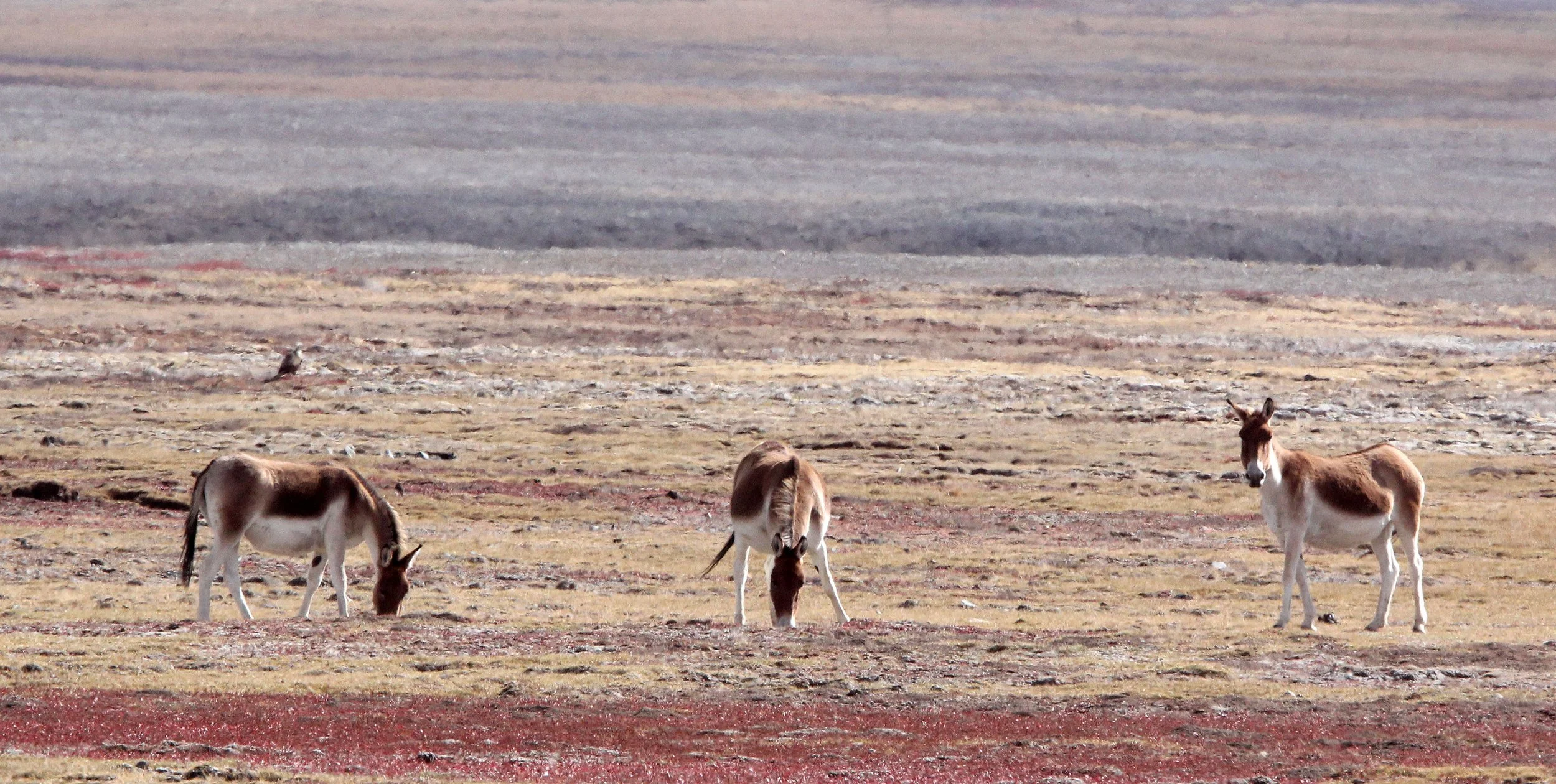
Kiang or Tibetan Wild Ass
The kiang (Equus kiang) is the largest of the Asinus subgenus. It is native to the Tibetan Plateau, where it inhabits montane and alpine grasslands. Its current range is restricted to the plains of the Tibetan plateau; Ladakh; and northern Nepal. Other common names for this species include Tibetan wild ass, khyang and gorkhar. Travellers' accounts of the kiang are one inspiration for the unicorn.
Kiangs are found on the Tibetan Plateau, between the Himalayas in the south and the Kunlun Mountains in the north. This restricts them almost entirely to China, but numbers up to 2500 to 3000 are found across the borders in the Ladakh and Sikkim regions of India, and smaller numbers along the northern frontier of Nepal.
Three subspecies of kiangs are currently recognised:
E. k. kiang — western kiang (Tibet, Ladakh, southwestern Xinjiang)
E. k. holdereri — eastern kiang (Qinghai, southeastern Xinjiang) (SEE GALLERY BELOW)
E. k. polyodon — southern kiang (southern Tibet, Nepalese border)
The eastern kiang is the largest subspecies; the southern kiang is the smallest. The western kiang is slightly smaller than the eastern and also has a darker coat. However, no genetic information confirms the validity of the three subspecies, which may simply represent a cline, with gradual variation between the three forms.
Kiangs inhabit alpine meadows and steppe country between 2,700 and 5,300 m (8,900 and 17,400 ft) elevation. They prefer relatively flat plateaus, wide valleys, and low hills, dominated by grasses, sedges, and smaller amounts of other low-lying vegetation. This open terrain, in addition to supplying them with suitable forage absent in the more arid regions of central Asia, may make it easier for them to detect, and flee from, predators.
Equus kiang - KIANG - KU HAI LAKE QINGHAI CHINA ACROSS MAIN HIGHWAY TO WEST (26)



























































































































